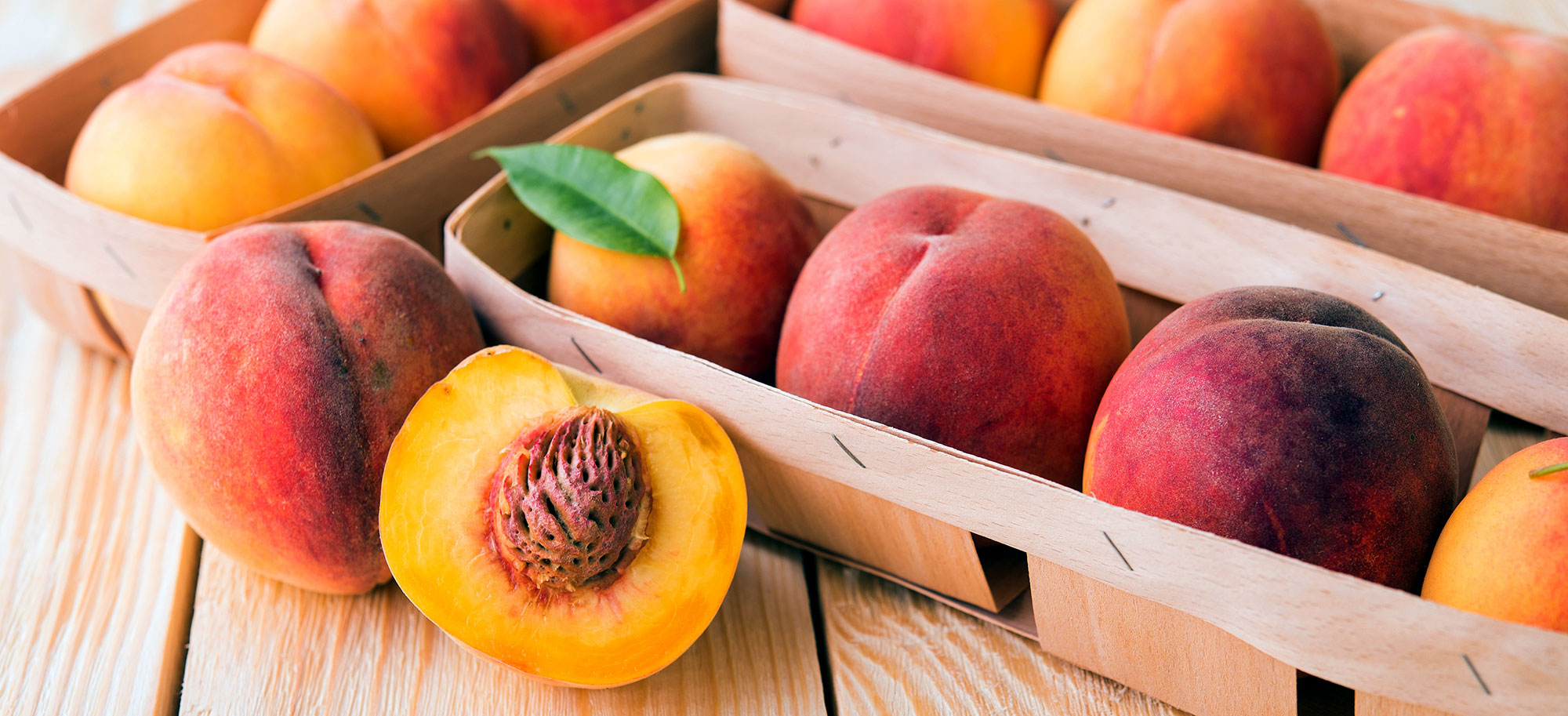Arm yourself with these tips to take advantage of sweet and juicy summer apricots, peaches, nectarines, and plums before it’s too late
Optimal Storage
- If unripe, store at room temperature out of the sunlight. Place in a closed paper bag to speed ripening.
- Once ripe, refrigerate loose in the low humidity drawer.
- Peaches, nectarines, and apricots will become mealy if left in the fridge too long.
- Do not wash until ready to use.

Freezing
Remove the skin from stone fruits before freezing. It’s extra work, but worth the effort.
- Blanch and cool: Bring a large pot of water to a boil. Have an ice water bath ready. Using a paring knife, make a shallow X in the bottom end of each fruit. Lower the stone fruit into the boiling water and leave them there for 30 seconds. Use a slotted spoon to transfer the fruit to the ice water bath.
- Peel: Gently rub the skin from the stone fruit and peel it off; it should come away from the flesh easily.
- Remove pits and cut into desired size (whole, halves, or slices).
- Dip in a solution of lemon juice and water (1 tbsp lemon juice in 1/4 cup water) to prevent darkening (optional).
- Lay the prepared fruit in a single layer on a lined baking sheet and freeze.
- Transfer to an airtight container and store frozen.
Root to Fruit
Peels
The skins of apricots, peaches, nectarines, and plums are all edible. If removed for a recipe, the peels can be used to flavour water or tea or blended into a smoothie.
Pitting Stone Fruits
Removing the pit of stone fruits can be a tricky and sometimes wasteful business. Follow these steps to pit a ripe nectarine:
- Cut all the way around the fruit following the seam, then gently twist it open.
- Take the half that still contains the pit and slice it lengthwise down the middle.
- Gently pry the two sections apart.
- Take the segment that still has the pit and prop it on its small end so you can cut out the pit, leaving the fruit undamaged.
Pits
The outer shell of the pits can be used to infuse liquid (e.g. water for tea or sorbet, dairy for cakes) with a mild fruit flavour.
The inside of the pit is a kernel that looks like an almond, which contains the dangerous chemical hydrogen cyanide. It can be roasted to impart a marzipan flavour, but check a recipe from a verified source before doing so to be sure you are proceeding safely.
Revival
Bruised
Remove bruises. The rest of the fruit can be used up.
Prevent Browning
To prevent stone fruits from turning brown, toss with lemon juice after slicing.
Overripe
Overripe stone fruits are wonderful in baked dishes, smoothies, and jams.

